
Published online on March 3, 2008, doi: 10.1073/pnas.0707711105
* Department of Biological Physics, Eötvös Loránd University, Pázmány P. stny. 1A, H-1117 Budapest, Hungary.

|
| Comparing bird and human soaring strategies |
|
Zsuzsa Ákos*,
Máté Nagy* &
Tamás Vicsek* ** |
|
Proc. Natl. Acad. Sci. USA 2008 105: 4139-4143. Published online on March 3, 2008, doi: 10.1073/pnas.0707711105 |
| * Department of Biological Physics, Eötvös Loránd University, Pázmány P. stny. 1A, H-1117 Budapest, Hungary. |
| ** Statistical and Biological Physics
Research Group of HAS,
Pázmány P. stny. 1A,
H-1117 Budapest, Hungary. |
| Supporting Information: SI Appendix , Download manuscript |
| One day`s flight of a Peregrine Falcon. The bird flew for about 3 x 1 hour. The colouring of the track visualises the vertical velocity; red means climbing, blue means sinking. Here you see the flight 10 times faster than real time, in three parts: |
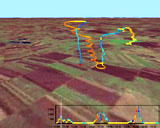
|
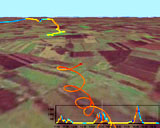
|

|
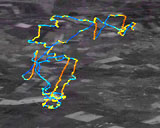
|

|
|---|---|---|---|---|
|
falconinflight1.AVI (92 MB) |
falconinflight2.AVI (68 MB) |
falconinflight3.AVI (111 MB) |
falcontrack.AVI (23 MB) |
| Part from a flight of a paraglider pilot. The colouring of the track and the speed of the video is the same as in case of the previous movie files. The local relief is shown here. |
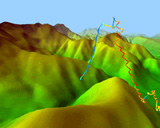
|
|---|
|
paragliderinflight1.AVI (42 MB) |
| Sample videos from our White Stork Project. |

|
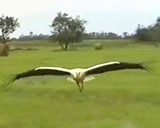
|
|---|---|
|
storkinflight1.avi (16 MB) |
storkproject1.avi (17 MB) |
| Nature Physics |
Research Highlights (April 2008) - A bird's eye view Fly like a bird (doi: 10.1038/nphys900) |

|
New Scientist | New Scientist video round-up - March 20, 2008 |

|
New York Times | Falcons Used Formula for Glider Thermals Before Human Pilots |

|
PNAS In this issue | Paragliders vs. storks and falcons |

|
ScienceBlogs.de Neurons | Fliegen wie die Vögel |

|